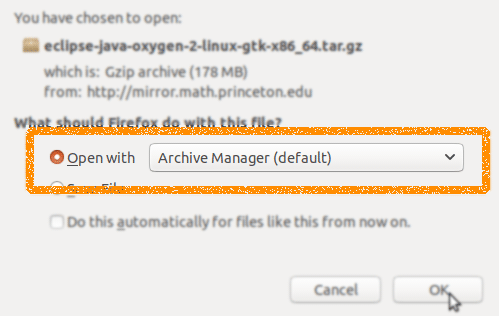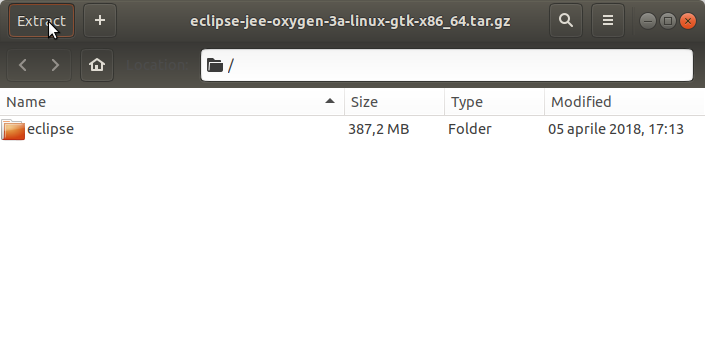Setting Up
-
2. Downloading Eclipse Java EE
Download Eclipse IDE for Java EE on Linux
On Firefox if possible on Prompt Select directly “Open with Archive Manager”!

Or after with Chrome Click the Button on the Page’s Bottom, or again Double-Click on it in the File Manager…
-
3. Extracting Eclipse Java EE
Then Extract Eclipse tar.gz into /tmp Directory
If it does Not Open automatically then Double-Click on File Manager:
Or from Command Line:tar xvzf ~/Downloads/*.tar.gz -C /tmp/
-
4. Installing Eclipse Java EE
Next follow with GNU/Linux CentOS Eclipse Installation.
For a System wide installation we make the superUser as owner:
sudo chown -R root:root /tmp/eclipse
Authenticate with the User Admin Pass.
If Got “User is Not in Sudoers file” then see: How to Enable sudo
Then we Move the Eclipse content into the /opt Directory with:sudo mv /tmp/eclipse /opt/
Again make a Symlink to put Eclipse into the working Path:
sudo ln -s /opt/eclipse/eclipse /usr/local/bin/eclipse
-
5. Oracle Java JDK Installation
How to Install Recommended Oracle Java JDK on CentOS
To check your current JDK version:
javac --version && java -XshowSettings:properties -version 2>&1 | grep 'java.vendor'
If it’s the official Oracle JDK, the output will include:
java.vendor = Oracle Corporation.
Contents